Negative Positivism
The new millennium began with a bizarre legal battle. The David Irving trial, which unfolded at the English High Court of Justice between January and April 2000, involved one of the most aggressive cross-examinations of architectural evidence—drawings, models, aerial and ground-level photographs—ever undertaken in a legal context. The case unfolded around a libel suit filed by David Irving against an American writer and her publisher, Penguin Books, for calling him “the most dangerous of all holocaust deniers and a falsifier of history.”1 Awkwardly, the process forced the veracity of claims on both sides to be put on trial, and crucially not by means of historical narration, but by subjecting the accusations to legal rules of evidence. On the tenth and eleventh days of the trial, January 26 and 27, the legal debate revolved around the architecture of one of the gas chambers—an underground structure that was part of Crematorium II in Auschwitz-Birkenau. One detail emerged as central to this debate. Irving, representing himself, focused his cross-examination of the expert witness facing him—architectural historian and Auschwitz expert Robert Jan van Pelt—on four small holes in the ceiling of the concrete roof of the structure.2 According to the few surviving witnesses—both victims and perpetrators—it was through these holes that the cyanide poison coming out of canisters labeled “Zyklon-B” would enter a room packed with thousands of people.
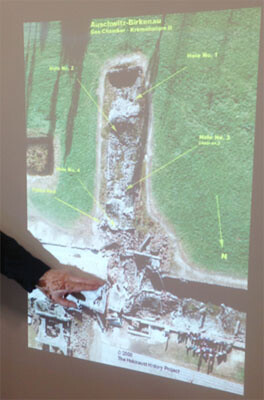

Van Pelt’s expert report, submitted to the court before the session began, conceded that “these four small holes … cannot be observed in the ruined remains of the concrete slab,” but explained that verification was impossible due to the state of the roof. The roof slab broke, twisted, and folded in on itself in the explosion that was meant to eliminate its use as evidence, and has only disintegrated in the fifty-six years since. Traces of the holes were discovered a few years later,3 but in 2000, the court heard the following exchange:
Irving: And you do accept, do you not, that if you were to go to Auschwitz the day after tomorrow with a trowel and clean away the gravel and find a reinforced concrete hole where we anticipate it would be from your drawings, this would make an open and shut case and I would happily abandon my action immediately?
Van Pelt: I cannot comment on this. I am an expert on Auschwitz and not on the way you want to run your case.
Irving: There is my offer. I would say that that would drive such a hole through my case that I would have no possible chance of defending it any further.4
Irving’s line of argument proposed that without these holes, the cyanide poison could not have been introduced into the room, and the room thus could not have functioned as a gas chamber. If the structure was not a gas chamber, then indeed Auschwitz could not have been a death camp. Without Auschwitz as the functional and symbolic center of the extermination process, the Holocaust, as a premeditated policy of industrialized racially motivated killing, could never have happened. “No holes no holocaust,” as another negationist already proposed5; and if it didn’t happen, Irving could not be accused to be the falsifier of history—quod erat demonstrandum!
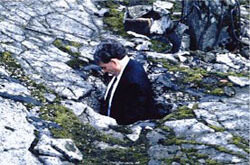

The use of material evidence to contradict survivors’ testimony had already been an established method used by Holocaust deniers. Witness testimony, they claimed, produced “too much metaphysics, not enough materialism.”6 However, it was not simple positivism that led deniers to insist on materiality, but rather a desire to preclude the very ability of witnesses to speak to history at all. By posing matter against memory, they demanded a history without subject and beyond language. In Irving’s legal strategy, the fact that the holes could not be found became “negative evidence” against the process of extermination. Negative evidence is an oxymoronic term that legal scholars use in order to refer to an absence of material evidence that they want to be considered as evidence in itself.7 It is what defense teams mobilize to disrupt prosecution cases: no body, no gun, no holes. In legal terms, it is a kind of antibody that comes to disrupt and dismantle complex epistemological assemblages of networked evidence. Furthermore, given that a hole is not matter, but a gap within material continuity, the issue at stake was not a simple absence but a certain “absence of an absence.” Throughout the trial, Irving also seemed obsessed by the metaphorical power of holes: “I am going to keep on driving holes in this case until your Lordship appreciates the significance of the holes, or their absence.”8
Harun Farocki’s 1988 film Images of the World and the Inscription of War presented an inadvertent prequel to this story. On August 25, 1944, a US reconnaissance mission was sent to photograph a petrochemical factory—Monowitz-Buna—next to the Auschwitz-Birkenau extermination camp. The five-by-three miles of territory captured in a single 35mm negative included the roof of Crematorium II, somewhere close to the edge of the frame in the lens’ area of parallax distortion. The discovery that this image, along with a few other aerial photographs from the spring and summer of 1944, contained photos of the crematorium took place only in 1978, when they were found by two CIA image analysts named Dino Brugioni and Robert Poirer. When enlarged, Brugioni and Poirer spotted four blurry marks on the roof of the crematorium building and annotated them as “vents.”9
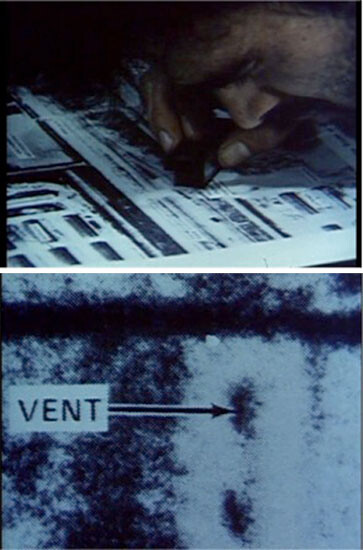

Irving claimed that the four marks could not be the four holes in the roof. They had a strange interference pattern, he said, and suggested that the negative had been tampered with by the addition of “brush strokes.”10 Already familiar with such arguments from negationist literature, Van Pelt presented a report prepared by Nevin Bryant, supervisor of image processing applications at NASA’s Jet Propulsion Laboratory in Pasadena and an expert in the analysis of aerial and satellite images. While the CIA analysts were enlarging the negatives with the analogue optics available at the end of the 1970s, Bryant used state-of-the-art digital magnification to peer into the “molecular composition of the film.” At stake was the way in which concrete elements got recorded by the silver halide crystals, the very chemical composition of a film, with about fifteen thousand feet of atmosphere in between. From this altitude and at the resolution of the specific negative used by the US Air Force, a single grain represented an area about of about half a meter squared on the ground.
Bryant suggested that the interference pattern, identified by Irving and other negationists, is a phenomena that can occur on the level of the grains in the emulsion of the film when single objects on the ground are at, or close to, the size of a single silver salt particle in the film.11 He first noticed a similar process in a small section of another photograph that was on the same roll of negatives (a reconnaissance plane shoots a fast automatic sequence of photographs along its flight path). This section of the image captured a group of prisoners being marched within the camp. Irving similarly referred to this representation of prisoners as “brush strokes.” Responding to the judge’s request for clarification, Van Pelt repeated Bryant’s conclusion: the interference pattern is caused when “the size of a head of a person is the same as the size of a grain in the the emulsion of the film, and the result of that was that a moiré effect, which occurs also in the newspaper when you photograph a picture which has been screened twice.”12
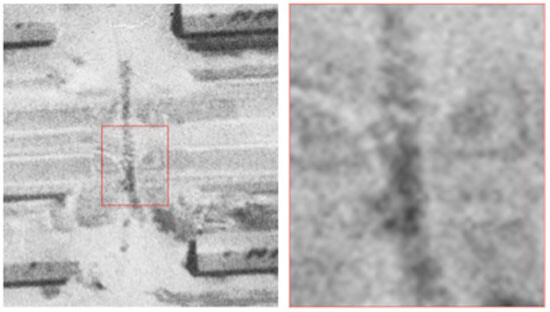

The size of the hole in the roof of Crematorium II was approximately the size of a person as seen from above. The hole was thus approximately the size of a silver salt grain. When an object photographed approximates the recording ability of a negative, it is in a condition that we can refer to as the threshold of detectability. In this condition, the materiality of the object represented (the concrete roof/hole) and the materiality of the surface representing it (the surface of the negative/silver salt grains) should be considered both as presence and as representation. Each surface must be equally analyzed as an image and as a material reality.
A certain inversion also occurred: the concrete roof was analyzed as a recording device, while the molecular surface of the negative was seen as a material composition of silver crystals.13 The photograph of the roof was thus a photograph of a photograph.
As the cross-examination went on, it became clear that against the linear argument mobilized by Irving’s negative evidence, Van Pelt had woven a complex and overwhelmingly convincing network of converging evidence, both for the existence of the holes on the surface of the negative as well as for its existence within the broken concrete surface.14
Irving lost the case, and my aim is not to reopen it. What we should take from this story, as we move on, is the problems of violence at the threshold of detectability.
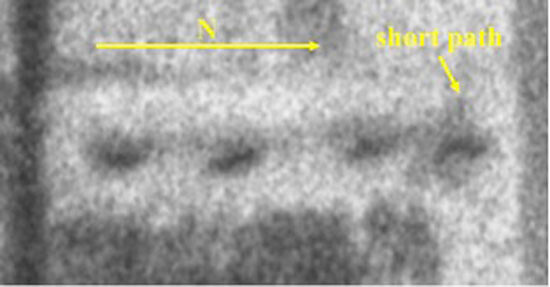

Drone Warfare at the Threshold of Detectability
I recalled the Van Pelt–Irving exchange about the holes when asked to undertake, through Forensic Architecture—a forensic agency of architects, artists, and filmmakers15—an investigation on drone warfare in Pakistan, Afghanistan, Yemen, Somalia, and Gaza.16 This was because many of the buildings struck by drones had a specific architectural signature to them—a small hole in their ceiling. The reason for this hole was that drone missiles, such as Hellfire or Spike, are equipped with a delay fuse. The few milliseconds between impact and detonation allow the missiles to penetrate through a roof into the room under it and spray their load of hundreds of lethal steel fragments inside. This blast of small fragments, designed to kill people but to leave the structure intact, is argued by the military to be a humanitarian munitions meant to limit casualties. Like many other techniques and technologies of “lesser evil,” this one enabled the proliferation of such strikes, thus causing more casualties.17 Seen from above, the hole in the roof is the only visible trace that the building was attacked by drones. But this hole, and the violence it evidences, are also at the threshold of detectability. This is because the size of the hole that a missile makes in a roof is smaller than that of a single pixel in the resolution to which publicly available satellite images are degraded.
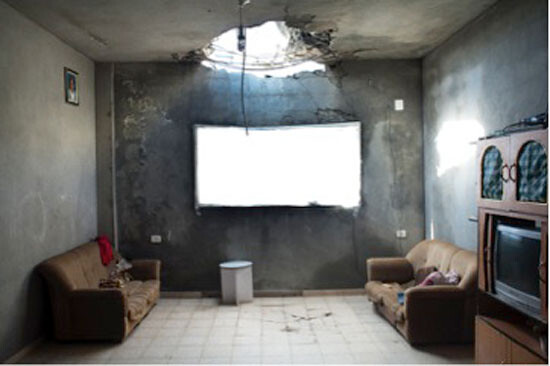

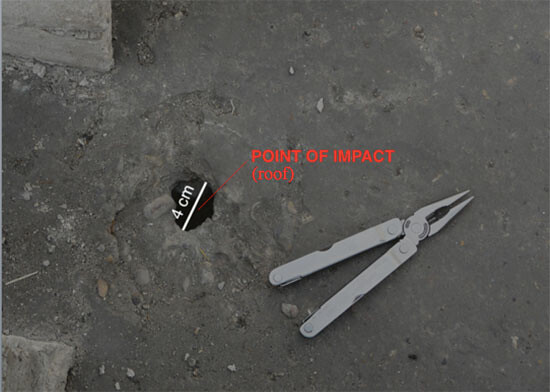

Until 2014, this resolution was legally kept to 50 cm/pixel, with a pixel representing half a meter by half a meter of ground.18 This resolution was legally determined because it is roughly the size of the human body when seen from above. The pixel resolution is not only a technical product of optics and data-storage capacity, but a “modulor” designed according to the dimensions of the human body. Unlike other architectural modulors (most notably that of Le Corbusier), it was not meant to help organize space, but rather to stamp the human figure out of photographs. The 50 cm resolution is useful because it bypasses risks of privacy infringement when recording people in public spaces, much in the same way that Google Street View blurs the face of people or car license plates. But the regulation also has a security rationale: it is not only important details of strategic sites that get camouflaged in the 50 cm/pixel resolution, but the consequences of violence and violations as well.19 The resolution of satellite images have direct bearing on drone attacks. Although at a resolution of 50 cm the general features of individual buildings can be identified, a hole in a roof—the signature of a drone strike—would appear as nothing more than a slight color variation, a single darker pixel, perhaps, within a pixel composition.
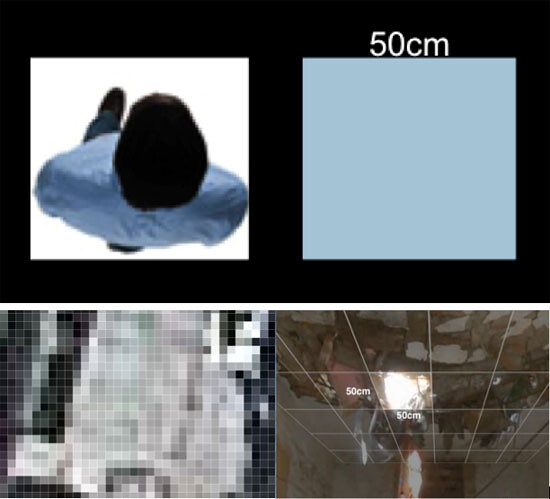

The 50 cm/pixel satellite imagery thus poses a digital version of the material problem presented by the silver salt particles in the negatives of the Auschwitz aerial photographs presented in the Irving trial. It masks a hole in a roof—a hole that is similarly related in its dimensions to the human body. In both, the hole in the roof is an indication that the room under it was an assassination chamber. In both, this hole was at the threshold of detectability in the images in which it was captured. My claim is of course not that there is a relation between the Holocaust as an attempt to exterminate an entire people in gas chambers, and a secret and illegal war conducted by the US in densely populated civilian areas, but rather that the forensic-architectural problem that arises forces us to examine the material limit of images.
We do not know the precise optical specifications of drone cameras. Some operators stated publicly (or told us privately) that they could identify people. They claimed that sometimes they could even recognize them. Others said that the resolution was not sharp enough to differentiate children from adults and that they have mistaken spades for guns.20 All statements confirmed however that the human figure is the thing to which drone vision is calibrated, obviously because it is designed to deliver munitions to people and kill them. However, while the human figure is the convergent point of drone vision, it is what satellite images are designed to mask.
The UN, via UNOSAT—its program delivering satellite-image analysis to relief organizations—as well as other research bodies, increasingly monitors violence by purchasing images from the archives of commercially available satellite companies. The analysis is undertaken by studying “before and after” images which are the most common form of forensic montage designed to frame an event between two spatiotemporal conditions: the “before” setting the benchmark against which the “after” state displays the result of an incident. Because satellite images render people invisible, the focus of the analysis turns to architecture, to the pairing or sequencing of buildings with ruins.


Both the act of military killing and the practice of investigating those killings are image-based practices, afforded through the combination of proximity and remoteness that is the condition of media itself. Drone strikes themselves are performed in a high-resolution designed to show information, but are monitored (by NGOs or the UN) in the poor resolution of satellite photographs designed to hide information. This fact inverts one of the foundational principles of forensics since the nineteenth century, namely, that to resolve a crime the police should be able to see more—in higher resolution, using better optics—than the perpetrator of the crime is able to. This inversion is nested in another, because in the case of drone strikes it is state agencies that are the perpetrators. The difference in vision between remote perpetrator and remote witness is the space of denial—but of a different kind than the denial presented earlier in this essay.
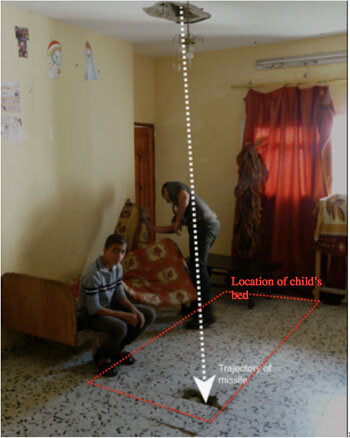

The formulation for denial employed by US agencies is officially sanctioned as the “Glomar response,” stating that US state agencies are authorized to “neither confirm nor deny” the existence—or nonexistence—of documents and policies such as a secret war of assassination in Pakistan. To say “this is untrue,” or “this did not happen,” is an antithesis that requires a counter narrative. Glomarization is however a form of denial that aims to add no information whatsoever. This form of denial has its corollary in the visual field through the satellite image’s inability to neither confirm nor deny the existence or nonexistence of holes in roofs that would otherwise constitute evidence of state-sanctioned violence. This form of denial is not simply rhetorical, but rather is made possible by the production of a frontier that has territorial, juridical, and visual characteristics.
Take for example the Waziristan region of Pakistan, since June 2004 one of the focal points for the drone campaign. Waziristan is part of the Federally Administered Tribal Areas (FATA). During the period of the British Raj, FATA was established as an extraterritorial zone of local autonomy. The Pakistani military established checkpoints that filter movement in and out; it also prevented the bringing-in and taking-out any electronic equipment, including mobile phones, cameras, and navigation equipment.21 The consequence is an effective media siege in which very few photographs and eyewitness testimonies were allowed to leave these regions. This media blackout enabled the drone warfare in these areas. It also helped Pakistani and US sources to deny this campaign ever existed and helped them to misleadingly claim that the casualties of drone strikes died rather in “bomb-making accidents.”22 In masking all signals within it, the pixel is the human-scale equivalent of the territorial-scale media blockage extended over FATA.
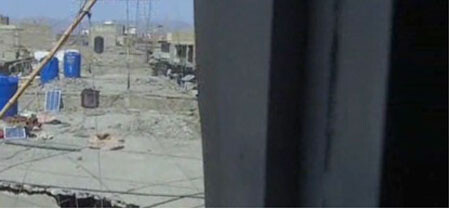

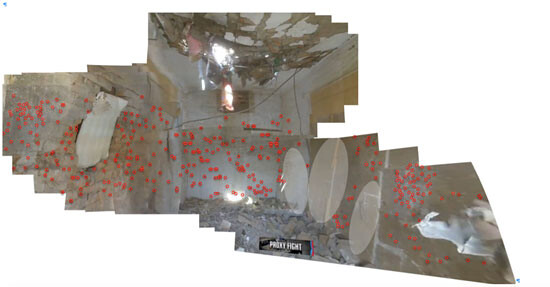

Return to the Witness
Facing the limitations of remote witnessing, one might turn to the testimony of survivors. I would like to present two investigations concerned with witness testimony of a different nature: the first is a video testimony shot hastily by a witness feeling him/herself to be in danger, and the second is based on the slow recollection process of a survivor of a drone strike.
The first investigation was concerned with a close study of a video testimony shot using a handheld camera (most likely a mobile phone) in the aftermath of a March 30, 2012 drone strike in Miranshah, North Waziristan, in which four people were reportedly killed. It was a rare piece of evidence, one of very few videos documenting a site destroyed by a drone strike.23 The video had to be physically smuggled out of Waziristan, passed from hand to hand throughout several weeks, before arriving in the NBC offices in Islamabad, which broadcasted twenty-two seconds from this footage. It was one of the first recorded representations of a building being hit.
The video had two main sequences. Each of the sequences involved a different room. The first showed the damaged building from the window of a room in higher building next to it. The second was an interior sequence showing the room targeted. The first room revealed something about the videographer, and the second room revealed something about the people killed in the blast.
The first sequence in the video has a large proportion of the window frame within the image frame. The window frame is not dead information; it rather makes one realize that the videographer was recording from within a certain depth inside the room, careful not to cross the window line. Every photograph records, of course, both the thing being photographed, as well as the state of the photographer.24 The concrete window frame in the image frame likely captures the videographer’s sense of danger. The videographer might be worried about being considered a spy, or about being seen by US drones still hovering overhead, or both.
The second room captured in the video clip was the one in which the people were killed. There was a hole at the center of the ceiling through which the missile had entered. The wall is seen pockmarked with hundreds of small traces from the explosion. These are the lethal fragments in the munitions head designed to kill people. Carefully studying every video frame that captured the surface of the wall, I have noticed two distinctly shaped areas in which there are no fragments. The bodies of people in the room absorbed these fragments, leaving a peculiar “shadow” on the wall. The wall itself functioned as a photographic film. The people were exposed to the blast in a similar way in which a photographic negative is exposed to light.25 The wall as a media form connected architecture and the dead body, pathology and forensic architecture.
The Architecture of Memory
The second case is based on aural testimony of a drone strike survivor. The witness is a German woman who was at her home in Mir Ali, North Waziristan, when it was hit by a drone-fired missile on October 4, 2010. She prefers to remain anonymous. The strike killed five people. After the attack, the witness returned to Germany, where she delivered her testimony to her lawyers and in the media. However, some of the details of the attack were obscured in her memory, which was interrupted by the experience of extreme violence. Many of the witnesses we work with deliver testimonies about the worst moments of their lives, days in which they lost loved ones.
Sitting between her lawyer and an architect acting as a computer modeler, she directed the process in which a detailed model of her house was constructed. The model included all rooms, furniture, and objects the witness could remember. Slowly, as she was sizing the rooms, locating the windows and doors, and placing mundane objects in these spaces, she started recalling and narrating fragments of memory from her life in this house and also from the strike itself. When the digital model was complete, we rendered it and undertook a series of virtual walk-throughs. “Returning” to the space and time of the strike, the witness could recount her story.26
One object in particular was important to the witness. It was a fan. She seemed uneasy about it, repeatedly adjusting its location. At the beginning it had been modeled as a ceiling-mounted ventilator; then the witness placed it as a free-standing fan on a tripod inside a room. A few moments later she took it outside and placed it in a small courtyard that mostly served the women and children. The house was gender-segregated; most of its space was reserved for men, and women were confined to a small part within. This limited the witness optics of the events that unfolded. When “walking” through the model in the digital aftermath of the strike, she recalled finding human flesh on the fan’s blades.27 The fan was a digital object but also a vehicle into her memory. Human memory, architecture, destruction, and digital reconstruction got entangled here in a way that does not surrender to the easy separation of subject and object, testimony and evidence, matter and memory.
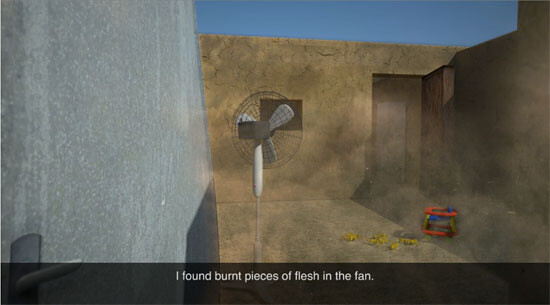

Both these investigations were based on different acts of bearing witness. They however had another important element in common: they both involved risk-taking. In order to be made public, both the witness and the video had to make an indeterminate path out of a frontier zone under military siege.28 As testimonies that involve risk and the courage to confront sovereign violence and its denial, these acts posed the most fundamental ethical and conceptual challenge to the aesthetic-political practice of forensic architecture.
Deborah E. Lipstadt, Denying the Holocaust: The Growing Assault on Truth and Memory (New York: Free Press, 1993).
An extended version of Van Pelt’s expert report was republished as: Robert Jan van Pelt, The Case for Auschwitz: Evidence from the Irving Trial (Bloomington: Indiana University Press, 2002). Van Pelt’s work is one of the main inspirations for Forensic Architecture.
Van Pelt, The Case, 2–3. The holes were since found; see Daniel Keren, Jamie McCarthy, and Harry W. Mazal, “The Ruins of the Gas Chambers: A Forensic Investigation of Crematoriums at Auschwitz I and Auschwitz-Birkenau” →, reproduced from Holocaust and Genocide Studies, vol. 18, no. 1, (Spring 2004): 68–103. Thanks to Patrick Kroker for this information.
David Irving v. Penguin Books, Day 11 →.
That was Robert Faurisson. Van Pelt, The Case for Auschwitz, 3ff., 24ff., and 458ff.
Keren, McCarthy, and Mazal, “The Ruins of the Gas Chambers.”
For van Pelt this “negative evidence” demonstrated the opposite: that the Nazis were covering their own traces; they were the first deniers, he explained. He stated that none of the drawings of the gas chamber showed the holes, because the architects were not allowed to draw in these pieces of incriminating evidence. In any case, the absence of evidence was certainly not evidence of an absence.
David Irving v. Penguin Books, Day 10 →.
Dino A. Brugioni and Robert G. Poirer, “The Holocaust Revisited: A Retrospective Analysis of the Auschwitz-Birkenau Extermination Complex,” February 1979 →.
Irving was referring to a 1992 study by John C. Ball. See Van Pelt, The Case, 56.
Van Pelt, The Case, 84 and 353.
David Irving v. Penguin Books, Day 11 →.
The relation between the single pixel and the human figure is a constant challenge in aerial and satellite image interpretation. The Tolimir case, one of the last of the Srebrenica cases judged at the ICTY (decided 2012, currently on appeal), has the following quote in regards to an aerial images of the Nova Kasaba soccer field. The Trial Chamber accepted the explanation of the witness on identifying darker pixels as people rather than shadows as claimed by the accused: “THE WITNESS: I have spent numerous and numerous hours analysing all these pictures and identifying what reference they can have on the ground … It’s a football field. There are no bushes in the middle. So these grey zones are not shadows. Though, indeed, a shadow has the same pixel than a group of people on the picture, but if you compare what is officially said on the photograph and the corroboration you can make of what a man represents in terms of a pixel on such a photo, this is why I allow myself to say that the dots that I have marked previously are people.” (March 29, 2010, p. 933, witness Ruez →.)
His evidence also included the interpretation of architectural plans drawn from the archive of the Auschwitz Central Construction Office, aerial photography, letters, diaries, logbooks, testimonies, and ground-level photographs. On Van Pelt’s evidence, see also: Debórah Dwork and Robert Jan van Pelt, Auschwitz, 1270 to the Present: A History (New York: W. W. Norton & Company, 2002); Robert Jan van Pelt, Architectural Principles in the Age of Historicism (New Haven: Yale University Press, 1993); and many other articles and essays.
See →.
The investigation was undertaken on behalf of various political and legal groups and was presented at the UN General Assembly in 2013 by the UN Special Rapporteur for Counter Terrorism Human Rights, Ben Emerson. The work was also presented in the context of legal action brought about by Pakistani lawyer Shahzad Akhbar in the UK Court of Appeal and in collaboration with the Bureau of Investigative Journalism (BIJ). The team was coordinated by Susan Schuppli (research and coordination), Jacob Burns (research), Steffen Krämer (video compositing and editing), Reiner Beelitz (architectural modeling), Samir Harb (architectural modeling), Zahra Hussain (research assistance), Francesco Sebregondi (research assistance), and Blake Fisher (research assistance). Some cases were undertaken in collaboration with Situ Research. Other partner organizations included the European Center for Constitutional and Human Rights (Andreas Schüller), One World Research (Bridget Prince, Nasser Arrabyee, and Anis Mansour), Al Jazeera English (Ana Naomi de Sousa), Chris Woods (freelance journalist), Edmund Clark (photographer), Chris Cobb-Smith (munitions expert and consultant), and Myra MacDonald (freelance journalist).
See Weizman, “665: The Least of All Possibl Evils,” e-flux journal 38 (October 2012) →; and The Least of All Possible Evils: Humanitarian Violence from Arendt to Gaza.
The US 1998 Land Remote Sensing Policy Act. In 2014, after lobbying by satellite companies, American satellite companies were allowed to provide images in a slightly sharper a resolution—about 30 cm/pixel. They successfully argued that private identity would still be masked at this resolution. See “US lifts restrictions on more detailed satellite images,” BBC, June 16, 2014 →. The European satellite Pléiades, unaffected by the American restrictions, has since the end of 2011 provided 50 cm/pixel images of Palestine/Israel. See also Hito Steyerl’sbeautiful film How Not To Be Seen: A Fucking Didactic Educational .MOV File, 2013. The size of the pixel in relation to the size of the body makes camouflage unnecessary.
In a further radicalization of the geopolitics of resolution, US satellite image providers make an exception to the 50 cm rule in Israel and the Palestinian territories it occupies. An amendment to the US Land Remote Sensing Policy Act, which sets the permitted resolution of commercial US image satellites, dictates that these areas are shown only in a resolution of 2.5 meters (later effectively eased to 1 meter per pixel) in which a car is made of two pixels and a roof—another common target—is depicted by 6–9 pixels. The snow screen placed over Israel’s violation of Palestinian rights in the West Bank and Gaza contributed to Turkey’s decision, after the Gaza Flotilla incidents, to send its own image satellite into space and make available 50 cm/pixel images of Palestine/Israel. William Fenton, “Why Google Earth Pixelates Israel,” PCMag, June 14, 2011 → Maayan Amir, “Gaza Flotilla,” →.
Heather Linebaugh, ”I worked on the US drone program. The public should know what really goes on,” The Guardian, December 29, 2013 →.
The Federally Administered Tribal Areas are officially a “Prohibited Area” for which nonresidents require special permission to enter. A complete list of Prohibited Areas can be found here, in Annex 1 →.
Jacob Burns, “Persistent Exception: Pakistani Law and the Drone War,” in Forensis: The Architecture of Public Truth, ed. Forensic Architecture (Berlin: Sternberg Press, 2014).
Rachel Maddow, “Victims of secretive US drone strikes gain voice in Pakistani lawyer,” MSNBC, June 29, 2012 →. See also Rabih Mroué, The Pixelated Revolution, 2012.
This situation recalls the photographs secretly taken by prisoners in 1944 inside one of Auschwitz-Birkenau’s gas chambers. A large part of the image is a thick black frame—the room—because the light is calibrated to the outside. Beyond the door of the gas chamber, dead bodies are seen being burnt. Often when used in books and articles about the Holocaust, the dark frame is cropped off. In his seminal reading of these images, George Didi-Hubermann objects to this cropping because for him the frame is a crucial part of the image: not only is it the only documentation of the interior of a gas chamber, but it testifies to the mortal danger in taking this image →. Georges Didi-Huberman, Images in Spite of All: Four Photographs from Auschwitz (Chicago: University of Chicago Press, 2012).
In the same way that human bodies created voids in the ash layer over Pompeii, or that a nuclear blast famously etched a “human shadow” onto the steps outside the Sumitomo Bank in Hiroshima.
This process of mediation based on embodiment recalled other experiments in “situational awareness” undertaken in the context of US military immersive training environments and post-trauma treatment as captured in Harun Farocki’s Serious Games (2009–10).A classic predecessor to this practice is narrated in Frances Yates’ magnum opus about the Roman and medieval tradition of mnemonic techniques. The Art of Memory emphasized the relationship between memory, architecture, and destruction. Frances Yates, The Art of Memory (London: Pimlico, 1992).
Deborah Brauser, “Novel ‘Avatar Therapy’ May Silence Voices in Schizophrenia,” Medscape, July 3, 2014: “Avatar therapy allows patients to choose a digital face (or ‘avatar’) that best resembles what they picture their phantom ‘voice’ to look like. A therapist, siting in a separate room, ‘talks’ through the animated avatar shown on a computer monitor as it interacts with the patient.”
As such, both these testimonies exemplified the power of parrhesia. Michel Foucault took parrhesia to be the courage to risk one’s life in order to speak an unpopular truth. The parrhesiastes “is always less powerful than the one with whom he or she speaks. The parrhesia comes from ‘below,’ as it were, and is directed towards ‘above’ (literally) … and in its extreme form, telling the truth takes place in the ‘game’ of life or death.” Michel Foucault, Fearless Speech, trans. Joseph Pearson(New York: Semiotext(e), 2001), 15–16; and Michel Foucault, The Courage of Truth, trans. Graham Burchell (New York: Palgrave Macmillan, 2011).
Category
An earlier version of this essay was published as an introduction to Forensis: The Architecture of Public Truth (Sternberg Press, 2014) and was the basis for a film that Harun Farocki planned to make using other elements from Forensis shortly before his death. This essay is thus dedicated to his memory.